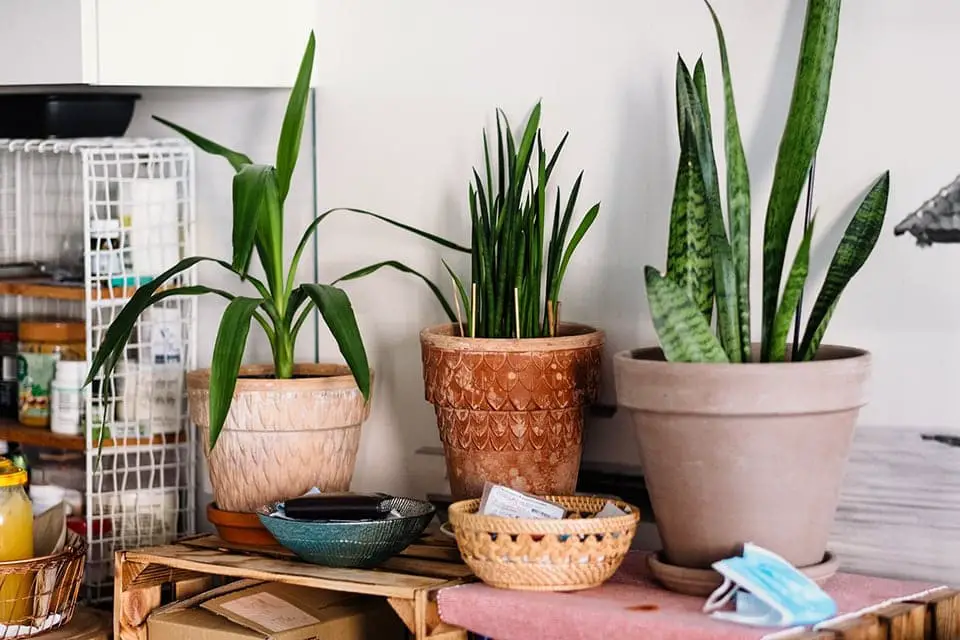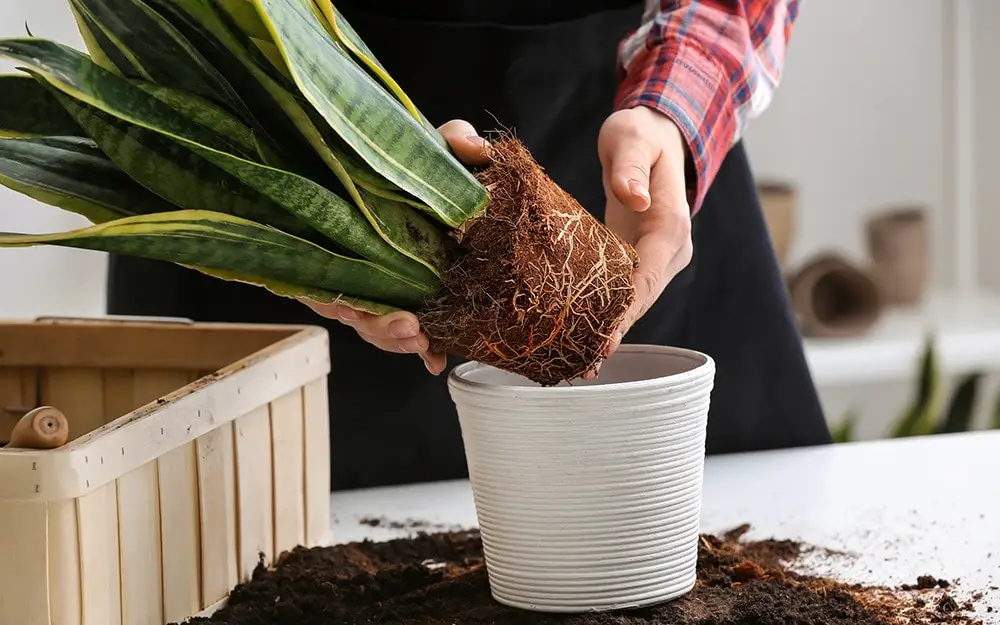Root rot of snake plant is one of the most common symptoms when planting. Although snake tongues are easy to care for and can adapt to many harsh environments. The tiger’s tongue becomes very weak in the face of root rot. Next, let’s join Ban Cong Xanh to learn about root rot disease and how to treat it in snake plants
Contents
What does a snake plant have root rot?
Plant roots are the part that absorbs water, nutrients and oxygen from the soil. However, when the humidity in the water is too high for a long time, the plant roots become “suffocated”. Airtight environments also create conditions for pathogens to grow and bacteria to grow. The germs of worms and aphids “hibernating” in the soil can then be activated and multiply more strongly. The roots turn brown, or, stagnate with liquid, making it even more impossible for the plant to absorb nutrients from the soil. And your snake plant becomes weaker and weaker, like a rotten wall facing the enemy on all sides!

So really, what is the reason why the snake plant has root rot?
1. Watering too often
For those who are new to growing plants, they often overwater the amount of water that the tiger tongue needs. Snake plant leaves have the ability to retain water, which helps them withstand drought for up to 2 weeks. Therefore, water the plant when the surface soil is completely dry and water “deeply” each time. You should also be careful to only water around the edge of the pot, do not let water stagnate in the leaves.
Like many other plants, snake tongue also has a period of hibernation. During this time, tiger tongues need less water than usual. So be careful when watering the plant.
2. The pot is too big and the drainage holes are not good
You might think that a large pot will hold a lot of soil and have plenty of space for the plant to grow. Just like “planting in a large pot will save you the trouble of re-potting it later.” However, the larger the pot, the more excess moisture there is, which is a fatal problem for water-storing plants. Therefore, only choose a pot that is moderately sized for the size of the plant. Every 1-2 years, repot with a diameter no larger than 1-1.5 inches (2.5 -3 cm).
A good planting pot for snake plants must also have good drainage. Terracotta pots allow moisture to evaporate through the pot walls, minimizing excess moisture. Besides, make sure your pot has plenty of drainage holes, and is filled with gravel.
Read More : Choose perfect pot for your plant
3. Attacked by pathogens
Snake plants can become sensitive to attacks from bacteria, aphids, and fungi. Bacteria attack and corrode roots, making them unable to develop and grow. Besides, activities such as pruning leaves, propagating, and repotting will create open wounds. That creates conditions for bacteria to penetrate directly and cause “infection”. Make sure you disinfect pruning tools and avoid water on new tree wounds!
4. Old planting material or too much humus – causes water stagnation.
Organic planting material will naturally rot and decompose over time. As a result, your growing medium will become tighter and less draining. Change the soil for plants about once a year or when you feel signs that the soil is too compact.
The growing medium needs to be mixed with dry, well-drained materials such as coconut flakes, rice husks, perlite, pumice, etc.
Early signs of root rot in snake plants
Early detection of root waterlogging can actually save the snake plant. However, unfortunately, those signs often appear below the soil surface. Growers often do not detect these signs until they appear on the plant surface:

1. Signs from the earth
Excess moisture is the most common factor causing root rot in tiger blades. Therefore, you need to check the soil regularly to ensure the amount of watering is appropriate. Every other day after watering, place your finger in the soil about 5 cm deep. If it still feels wet, it means there is a problem. You need to reduce the amount of water or stop watering until the soil stabilizes.
2. Symptoms on leaves
Yellow leaves are the most visible sign that there is a problem with plant roots. At this stage, your plant’s roots have not yet been completely affected. More serious signs such as falling leaves, yellow roots and water blisters signal that the roots are severely waterlogged.
3. A fishy, rotten smell emanates from the tree
Healthy roots will have an earthy smell or be nearly odorless. But when sick, bacteria cause plant roots to develop a foul, unpleasant odor.
- Start by removing the entire plant from its current pot and rinsing the roots under running water. The soil surrounding rotten roots can be a source of infection to healthy parts. Be gentle and try to wash away as much soil as possible. After rinsing, blot with paper towels to dry completely.
- Choose tools such as scissors, knives, or sharp pruners, and disinfect them with alcohol solution or boiling water. Then, prune away damaged and waterlogged parts of the root system. You may even have to remove the entire root, or leaf segments if your plant is too waterlogged.
- This step is optional, soak the remaining healthy roots in antifungal solutions to kill remaining pathogens.
- The final step is to replant the healthy plant in new soil and a thoroughly cleaned pot.
Note: after repotting, you do not need to water immediately, let the plant dry for a few days. Then, carefully reset the plant’s watering cycle. As new roots grow and new leaf buds develop, the snake plant will need less water. During this period, only expose the tiger’s tongue to light light, avoiding direct sunlight. Only fertilize when the tree is healthy again, young roots that cannot absorb nutrients may burn. Fertilizer is not a treatment and cannot be used on sick plants!
Above is the necessary information from reasons, symptoms to how to fix snake plant’s leaf rot – root rot. If you find it interesting, save it so you can read it again when necessary. By thoroughly understanding plant issues, you no longer have to worry about your reputation as a “plant killer”.

